What are the sizes of the toilet?
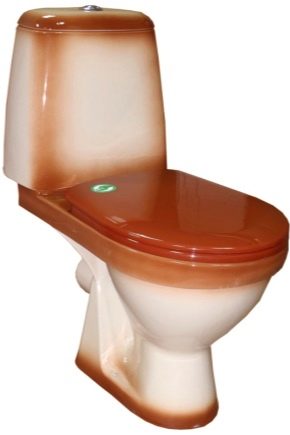
Toilet and bathroom are integral elements of a modern person's home. However, the first is not always characterized by a large area, so apartment owners have to be smart to place the necessary plumbing. However, even if the size of the toilet allows, it is important to correctly calculate the size of plumbing and other elements in order to create an easy-to-use bathroom.
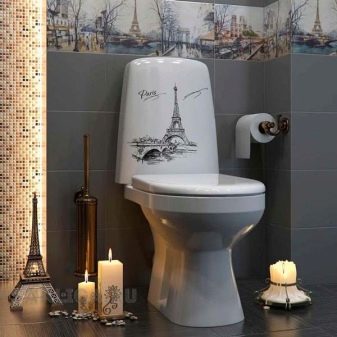
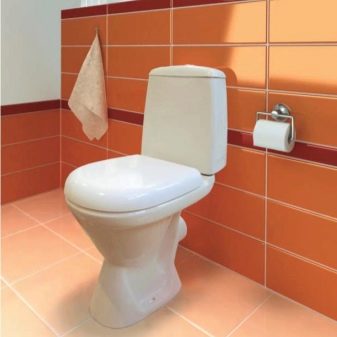
What parameters are there?
On the modern market, you can find toilets from domestic and foreign manufacturers. The dimensions of the former correspond to GOST, their standard dimensions depend on the type of device. However, the differences are not critical, and a device with parameters 380x480x370-400 mm is considered the most convenient.
There are three types of devices in terms of size:
- small (the length of which does not exceed 54 cm);
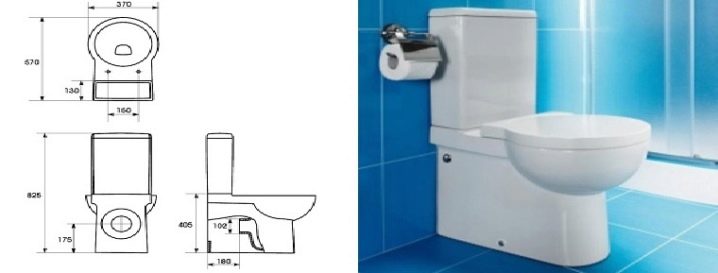
- standard (length dimensions range from 54-60 cm);

- large (more than 60 cm long, maximum - 70 cm).
Large devices have impressive dimensions, as a rule, they are chosen by oversized users. In this regard, not only the size of the toilet is important, but also its ability to withstand a weight of up to 500 kg.
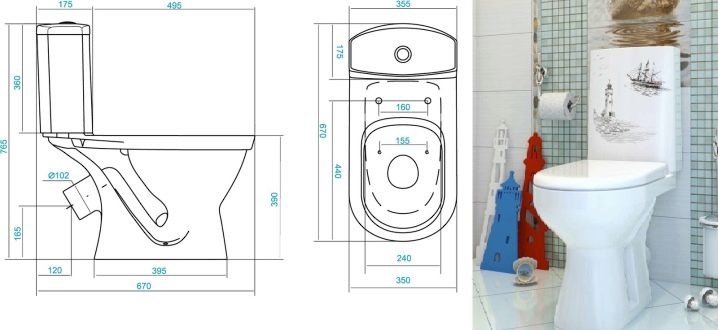
The most common domestic devices are the following:
- structure with a shelf (has a length of 605 mm, a width of 320-370 mm, a height of 340 mm);
- toilet bowl without a shelf (device length within 330-460 mm, width - from 300 to 350 mm, height - 360 mm);
- children's model (with a bowl length of 280-405 mm, a width of 130-335 mm, a height of 210-290 mm).
The shelf in the bowl should not be confused with the shelf on which the drain tank is installed. At the moment we are talking about the latter.

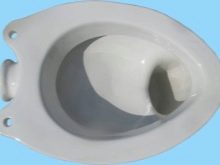
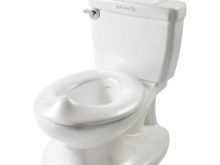
The dimensions of imported devices are generally close to domestic ones. Width can reach 360 mm, length - 680 mm. Further in the drawing you can see how toilets with a shelf and without a shelf differ in terms of size and design.
In this case, a distinction should be made between devices with a solid and an additional shelf. Installation of a toilet bowl with an additional shelf provides for additional installation of the latter.
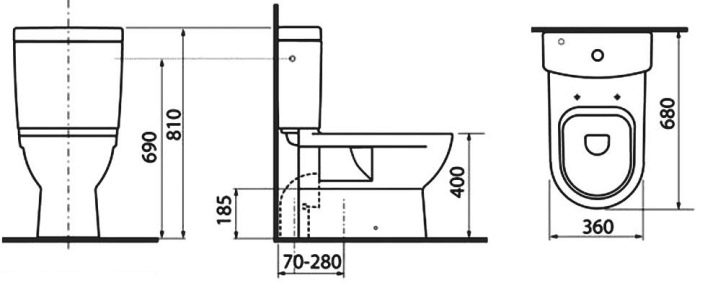
The specified dimensions do not include the parameters of additional devices and accessories. So, the size of a toilet bowl with a cistern is proportionally increased due to the cistern.
The weight of the structure depends on the type of material used. Faience toilets (the most common option) weigh an average of 26-31.5 kg. The porcelain counterpart has a lighter weight - from 24.5 to 29 kg.
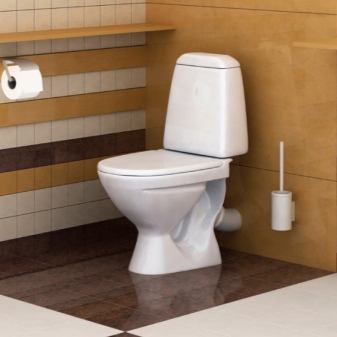
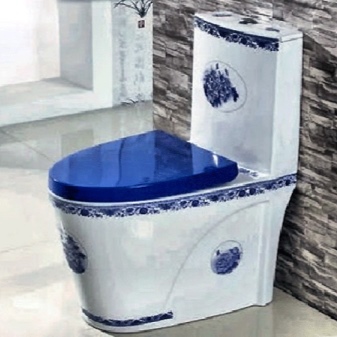
The heaviest are marble toilets, the weight of which ranges from 100-150 kg. Among the lightweight toilets are models made of "stainless steel" weighing 12-19 kg. In addition, they are characterized by increased durability and are installed in public premises, at production facilities. The lightest model is plastic, weighing an average of 10.5 kg.
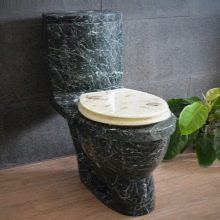
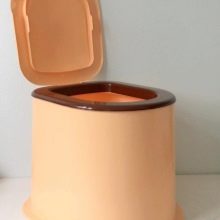
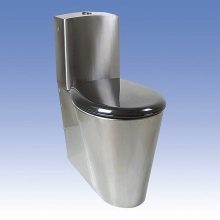
Suspended models weigh less than floor-standing models of the same size, since they do not have a "leg".
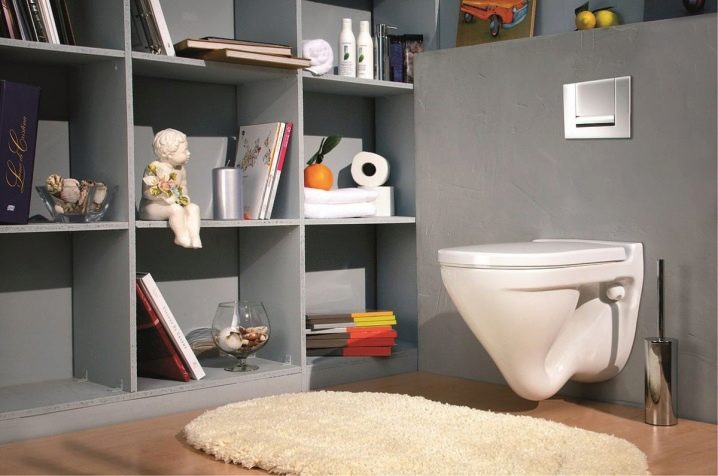
The weight of the cistern also affects the weight of the toilet, and its weight, in turn, depends on the material of manufacture and volume. A standard ceramic tank with a volume of 6 liters has a weight within 11 kg. As the volume decreases, the weight of the tank also decreases.
These indicators are of no small importance when installing the device in dilapidated multi-storey buildings, as well as when installing in a private house on the second floor.
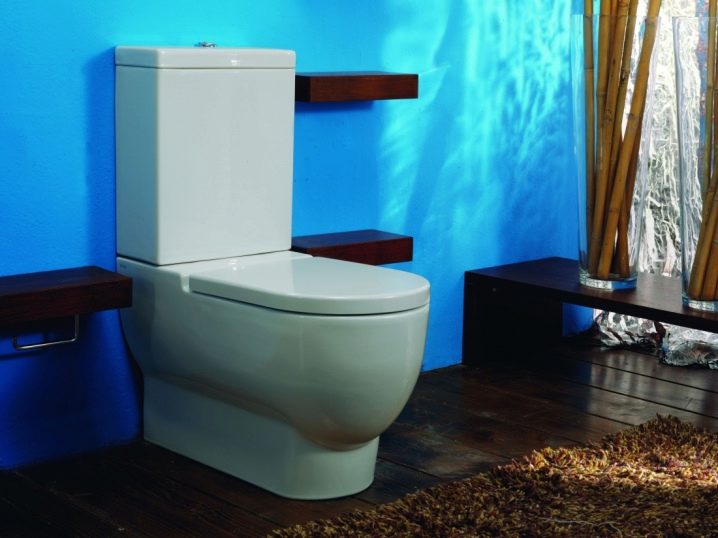
Model overview
Different types of toilets have different dimensions. One of the most ergonomic models is a device in which the tank and bowl form a single whole.The parameters of such a toilet are regulated by GOST.
It comes in 2 variations:
- "Compact" with a cast shelf (dimensions 60.5x34x37 cm);
- analogue with a separate shelf (its dimensions are 46x36x40 cm).
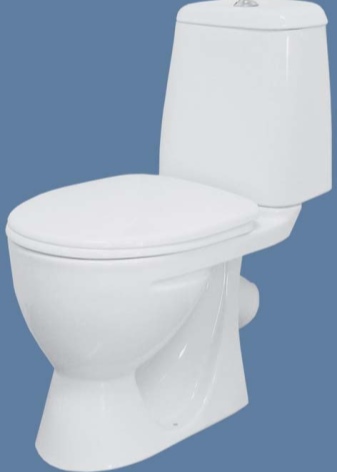
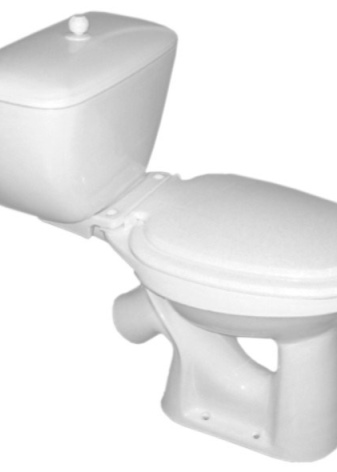
Another model with a combined tank is a monoblock. Here, the bowl and tank are made from a single piece of ceramic, representing a one-piece structure. The difference between the monoblock and the previous version is the absence of connecting elements between the bowl and the tank.
The release of Russian-made monoblocks is regulated by GOST, and therefore the devices have the same parameters. The width ranges from 36-37.5 cm, the length is 68.5-70 cm, and the height is 39-77.5 cm.
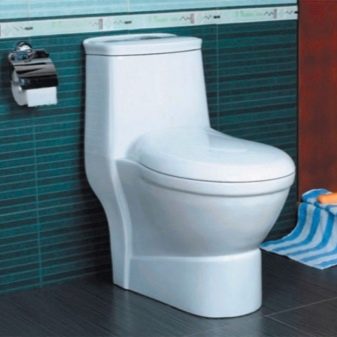
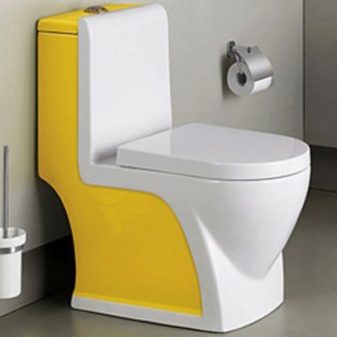
For small toilets, corner toilets are often chosen. They can be floor-standing or hinged, their characteristic feature is a triangular-shaped cistern. The average sizes are: width - within 34-37 cm, length - 72-79 cm, and height - 45-50 cm.

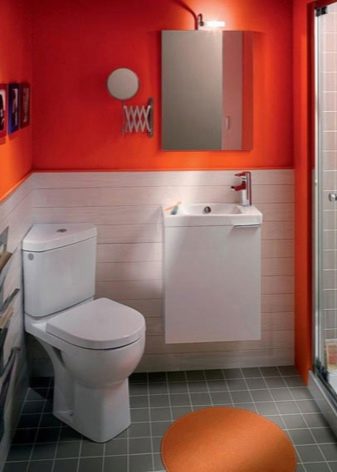
A hinged or console toilet allows you to visually increase the space of a room, although it is incorrect to say that it is much more compact than a floor one. In such a toilet, only the toilet bowl built into the wall and the flush button are visible to the user. The bowl and other communications are installed on a metal frame, called an installation, which is hidden behind a false panel. The organization of the latter also "eats up" the useful area of the toilet. However, the built-in bowl frees up space under the floor, and the whole structure looks less cumbersome due to the lack of a tank in the field of view. Wall mounted toilet options vary from manufacturer to manufacturer. On average, they are 35-37 cm wide, 48 to 58 cm long, and 42 cm high.
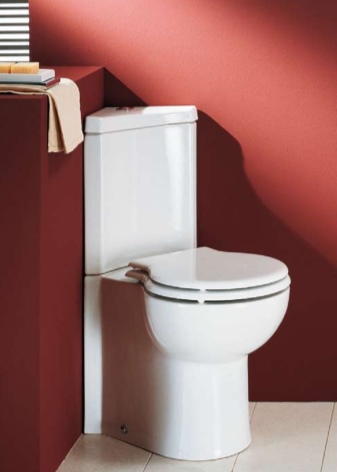
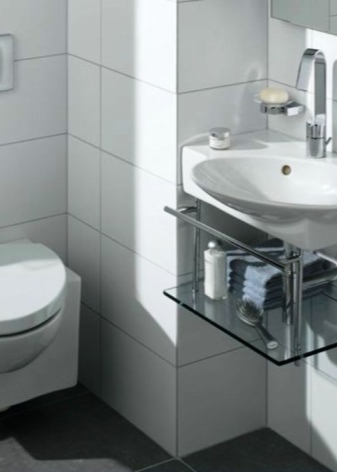
The dimensions of standard floor-standing toilets are 520x340 mm with a height of 400 mm. American and European counterparts are usually 7-10 cm longer.
In addition to the size of the toilet, it is also important to take into account the features of the parameters of the outlet., since the size of the gap between the toilet and the wall depends on the type of connection of the device to the sewage system. The most compact will be a toilet with an oblique outlet. The sewer pipe coming out of the wall can be "built up" to the required parameters using pipes or angle fittings. The most "capricious" devices are considered to be with direct release, since the system requires anchoring to the floor, or rather, to the pipe coming out of it. The maximum that can be thought of in such a system is to turn the structure along the axis in one direction or another.

When calculating the volume of the cistern, you need to be guided by the fact that one trip to the toilet consumes 13 liters of water. As a rule, this is the standard volume of the tank. You can reduce water consumption by installing a double flush system and "dividing" the tank into 2 compartments, 6 and 3 liters each. The installation of such a device allows on average to save up to 6,000 liters of water per person per year.
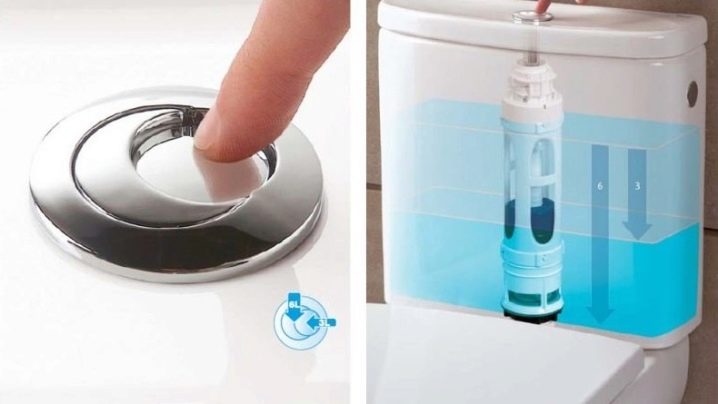
There are 4 types of drain tank installation:
- monoblock (there is no connection between the bowl and the tank);
- compact version (cistern on the toilet bowl);
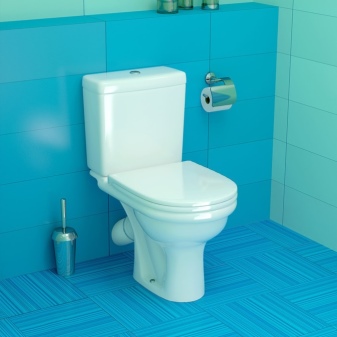
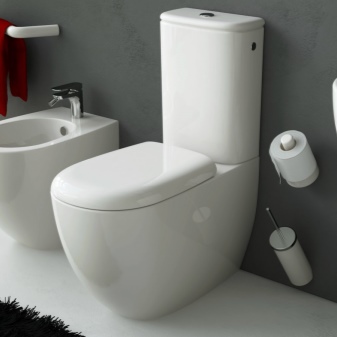
- hidden (installed on the installation);
- suspension.
The latter can be mounted high above the toilet (about 150 cm from the floor), low (up to 50 cm) or located at an average height from the floor (from 50 to 100 cm). The connection of the toilet and the tank is carried out using a special pipe.

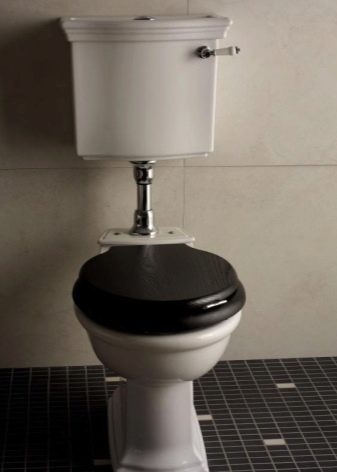
In addition to the dimensions of the toilet itself, the parameters of components and accessories also affect the space it occupies. So, when organizing attached and wall models, installation is necessary. Its dimensions are due to the size of the toilet and may vary. Frames are considered standard with a width of 50 cm and a height of 112 cm.
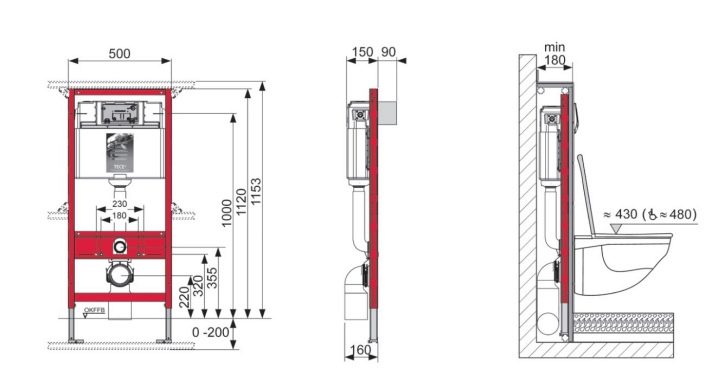
When installing the structure, the dimensions of the corrugated pipe are of no small importance. Its purpose is to drain water from the toilet. It is made from hard or soft plastic. If the length of the cuff of the device is less than 130 mm, the length of the corrugation should be 200-1200 mm. Diameter - corresponding to the toilet model, to which such a drain is fixed.
Another important element is the cuff that connects the toilet and the sewerage system. It should be flush with the outer outlet of the device. As for the length, there are long and short cuffs (112-130 mm).
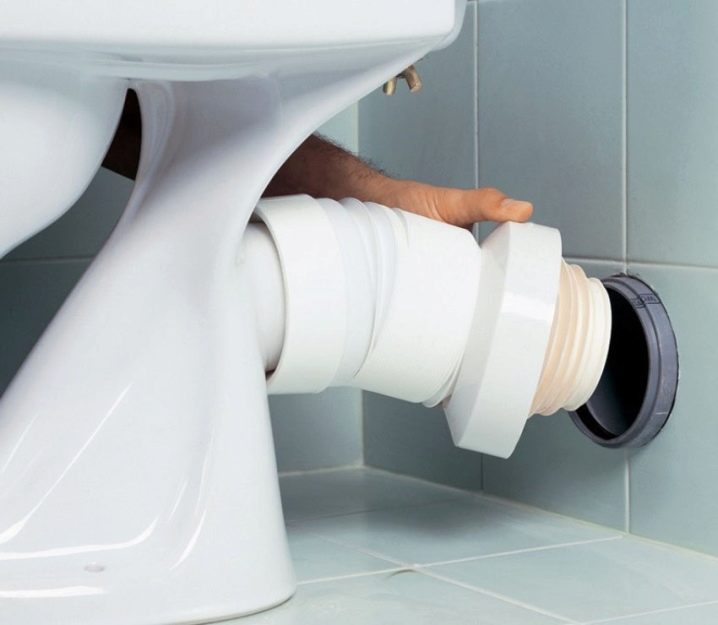
Atypical case
Atypical cases usually include devices for a large or small room, as well as devices for people with disabilities. For a spacious bathroom, it is recommended to choose oversized (large) toilets and devices with a built-in bidet, for small ones - corner or children's plumbing fixtures.
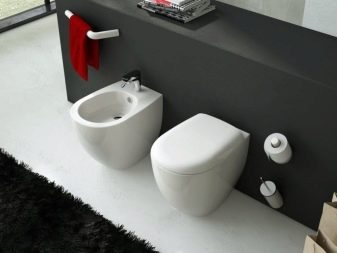
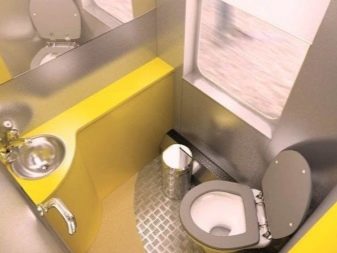
Among the toilet bowls of non-standard sizes there is one for children. It is noteworthy that it can be used not only in childcare facilities or families with children - such a device can also be installed in a small-sized toilet for adults. A prerequisite is that the entire room must be made in a minimalist style, otherwise inconsistency cannot be avoided.
The dimensions of domestic children's toilet bowls according to GOST are 29x40.5x33.5 cm.Analogues of foreign production are somewhat larger - the width can increase up to 35 cm, the length - up to 59 cm.
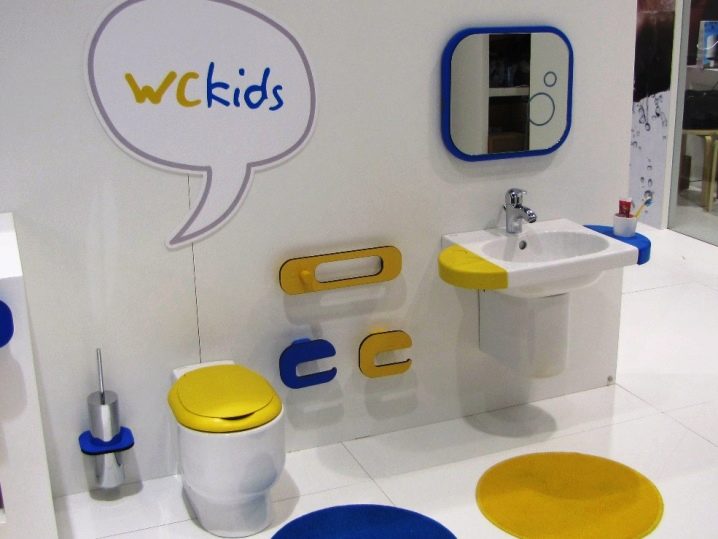
Toilets with bidets also have different parameters from other devices. As a rule, they are more elongated, since a system of washer nozzles is mounted on their rim. The cistern of these toilets can also have large volumes. A floor-standing toilet with a bidet is usually 700 mm long and 410 mm wide. The suspended structure is characterized by the following parameters - 485x365 mm.
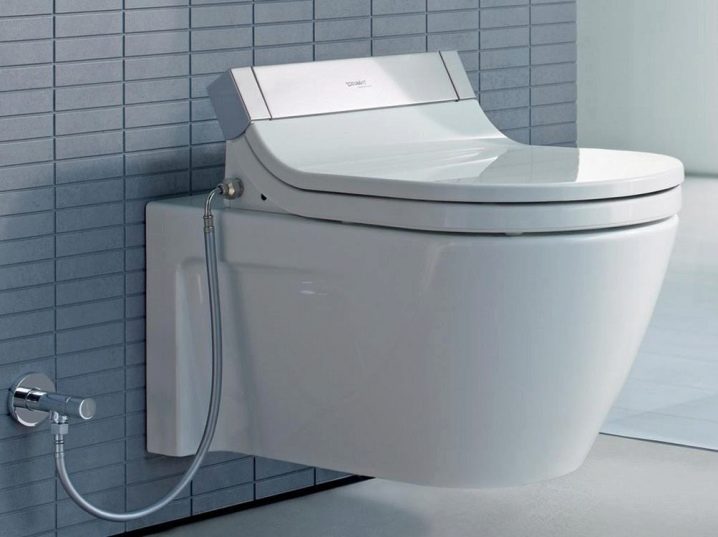
Toilet bowls for disabled people deserve special attention. These can be custom made devices, or standard toilets equipped with handrails, a special seat, and so on. Such designs also differ in height - they should be 10-20 cm higher than standard toilet bowls. If a person moves in a wheelchair, then the height of the toilet bowl should be identical to the height of the wheelchair, usually 50 cm. In general, the height of the toilet seat for people with disabilities is 50-60 cm. By the way, toilet bowls of such parameters are also convenient to use for the elderly and people recovering from surgery or serious injury.
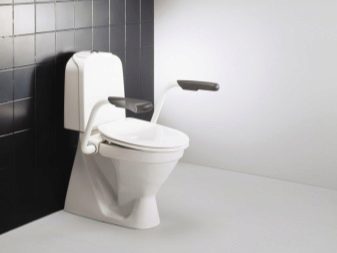
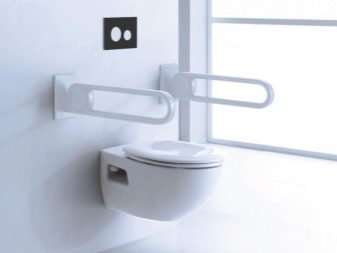
If it is not possible to install a special toilet, you can purchase pads. They are seats that attach to any toilet and increase its height. The pads have handrails. By the way, the latter can be mounted both on the wall and attached directly to the toilet.

How to calculate correctly?
First of all, you need to determine the location of the toilet and calculate whether it will fit into the toilet. It should be remembered that at least 25-30 cm of free space should remain on each side of the device. The minimum distance from the device to a door or opposite wall is 70 cm.
In addition, the distance from the wall to the center of the sewer pipe should be clarified. It should not be large, otherwise an oversized connecting hose will need to be installed. But the minimum distance is also inconvenient - the pipe will interfere with the installation. This parameter is an indicator of how far the toilet will be moved away from the wall.
For structures with a horizontal outlet, the sewer is entered 18 cm from the floor, for devices with an oblique outlet - from 20 cm.
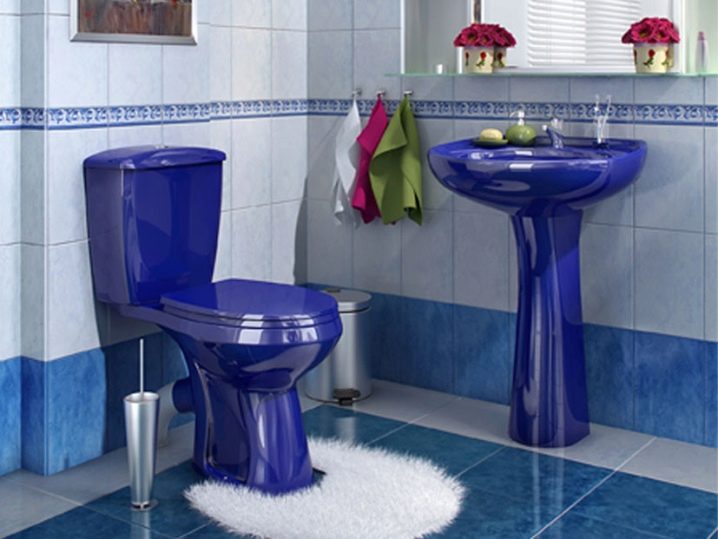
When installing a toilet bowl with a built-in tank or a wall-mounted model, the dimensions of the installation and false wall should be taken into account in the calculations.
You can find out the approximate dimensions of the toilet, the use of which will be convenient in a particular room, by measuring the depth of the room and dividing it by 2. The resulting figure will be the approximate length of the device. The rest of the parameters of the toilet will be set relative to it.
For large rooms, you should choose a bowl with a large size.it is possible to choose devices combined with a bidet. For small-sized toilets, compact models of floor-standing or hanging type are recommended, as well as corner structures with installation.
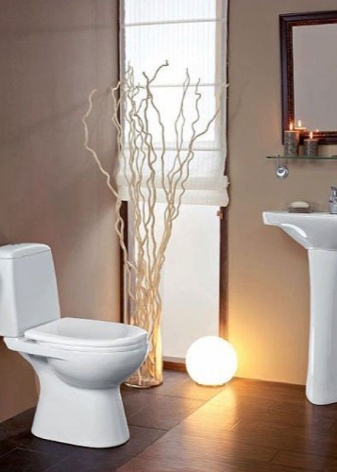
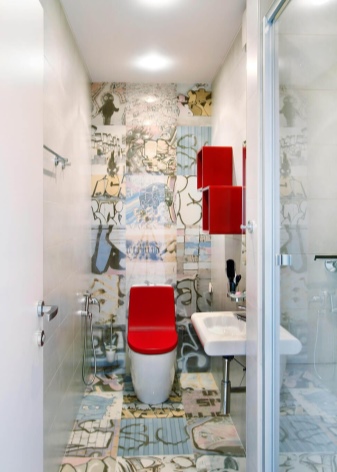
It is recommended to select a device that will be convenient for the largest or tallest member of the family. The height of the structure should be comfortable for a person sitting on it. He should not experience tension in his legs, being able to completely lower his feet to the floor. As for the width, it must be "correct". With an excessively narrow bowl of the toilet, the rim "cuts" into the legs, with a wide one, the blood circulation in the legs may be pinched.
When choosing a children's toilet for a child, you need to remember that it grows quickly. In this regard, the dimensions of the device chosen for the dimensions of the child should be increased by 20%. This will allow you to change the toilet less often.
Installation of separate equipment for children is advisable if there is enough space in the toilet. Otherwise, it is wiser to install one toilet, and purchase a special cover for children.
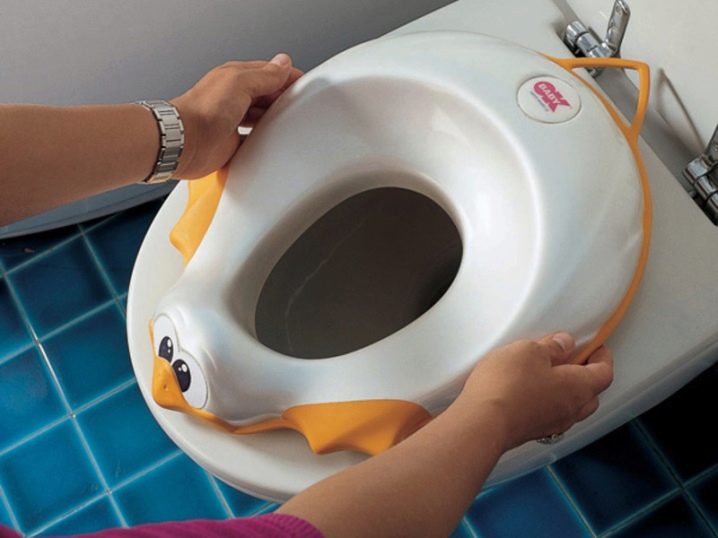
Installation recommendations
Toilet installation is a relatively simple process, in most cases such work does not require the involvement of professionals. The instruction, which is necessarily attached to each device, greatly simplifies the matter.
First of all, it is necessary to dismantle the old toilet bowl, having previously shut off the water and scooped out the water from the bowl. It is necessary to loosen the mounting bolts, if necessary, beat off the bowl from the floor and the sewer pipe.
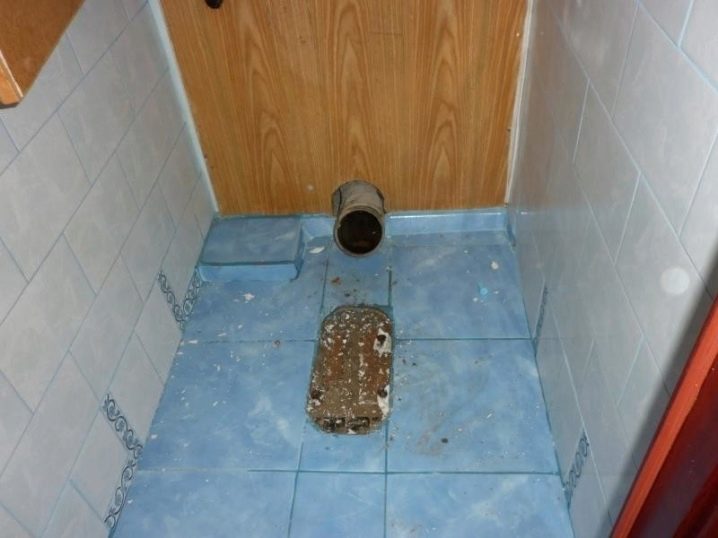
The next step is to provide a level and smooth floor surface for the installation of the new unit. While the base is preparing and drying (for example, after screed the floor or leveling it with cement mortar), it is necessary to assemble the toilet. Then you should make the necessary markup. It is more convenient to make the necessary marks in the floor by placing the bowl on the prepared base and marking the fixation points with a pencil (there are special perforations on the toilet “leg” for this, through which you can draw points with a pencil on the floor).
The lining of the toilet bowl to the sewage system is made using corrugation, the tank is connected to the cold water supply pipe using a flexible hose. The latter is brought to the tank from the bottom or from the side.
After the toilet is installed, it is necessary to seal all joints with silicone sealant and give the sealant time to dry out. After that, you need to make a control use of the equipment (drain the water several times) and check the correct operation of the system. If everything is in order, you can attach the seat.

The installation of a hidden tank begins with the installation of the installation on which the tank is attached. Further, the stages of work are identical to those described above, the process ends with checking the correctness of work and the subsequent installation and decoration of the false wall.
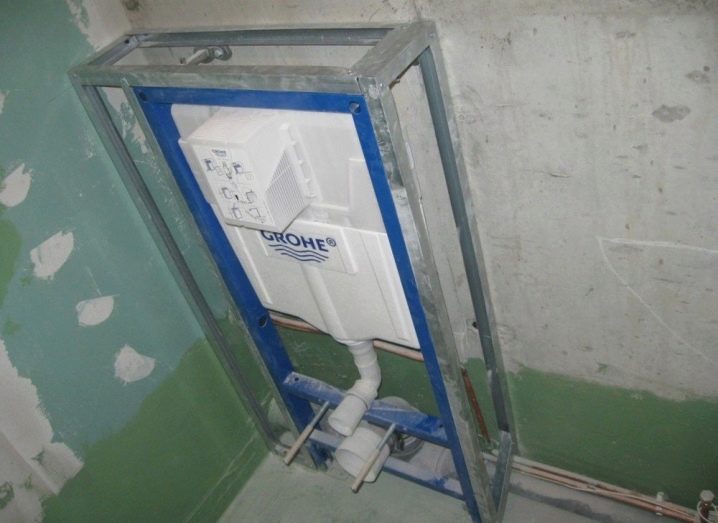
In the next video, you can clearly see how to install the toilet with your own hands.













The comment was sent successfully.